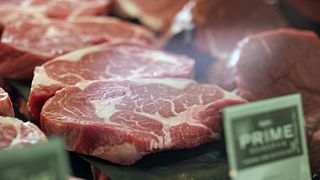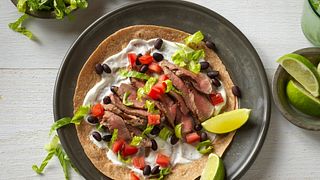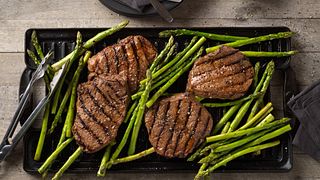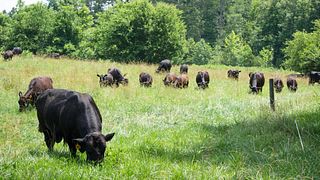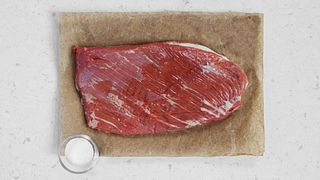Grading Beef
Beef grading sets the standards for the various quality levels of beef. The beef grading program uses highly trained specialists and sometimes grading instruments to determine the official quality grade. Beef quality grading is voluntary and administered by the USDA and paid for by beef packers.
The grade is primarily determined by the degree of marbling — the small flecks of fat within the beef muscle. Marbling provides flavor, tenderness and juiciness to beef and improves overall palatability. Other grading factors include animal age, and color and texture of the muscle.
Let's explore the different beef grades.
Prime
Prime beef is produced from young, well-fed cattle. It has abundant marbling, is produced in smaller quantities than other grades, and is often sold in hotels and restaurants. Prime roasts and steaks are excellent for roasting, grilling or broiling.
Choice
Choice beef is high quality and produced in highest quantity, but has less marbling than Prime. Choice roasts and steaks, especially from the rib and loin, will be very tender, juicy and flavorful. They are suited for roasting, grilling and broiling. Less tender cuts are perfect for slow-cooking.
Select
Understanding the Label:
At the supermarket meat case, each beef package label typically identifies the primal cut and the sub-primal cut name. It also includes the weight, price per pound, total price, sell-by date and safe handling instructions. It may also include a grade, nutrition and preparation information and the country of origin.
Ground Beef Label:
What to look for:
- Select beef with a bright cherry-red color. Beef in a sealed bag typically has a darker purplish-red color. When exposed to the air, it will turn a bright red.
- Choose beef that is firm to the touch.
- Make sure the package is cold with no holes or tears.
- Choose packages without excessive liquid.
- Purchase beef on or before the sell-by date.
